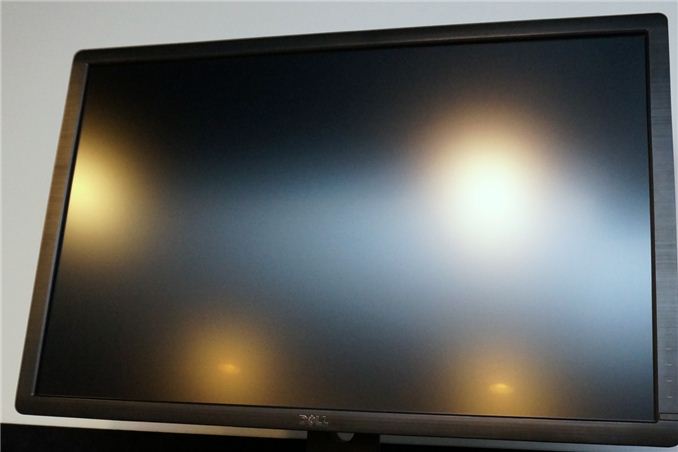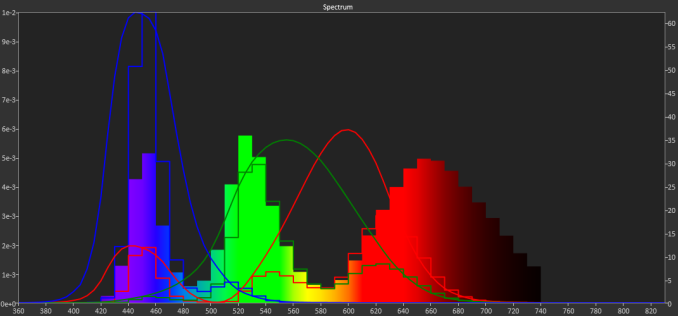Dell U3014 LCD Review
by Chris Heinonen on April 15, 2013 2:00 PM EST
In the last year, 27” 1440p displays went from being really high end in the monitor food chain to becoming close to commodity items that you buy off EBay for cheap from random vendors. It seems that there is a bit of a shift in the high-end display market, where previously resolution was dictating the upper echelon but now as we wait for 4K displays, or retina-style PPI displays on the desktop, it’s other features that are dictating what costs more.
The newest reference display from Dell is the U3014, which takes the place of the U3011. It retains the same 2560x1600 resolution of a 30” display, but adds a few more notable features including DisplayPort MST support, USB 3.0 support, uniformity correction, and most notably it's one of the first LED-backlit displays with an AdobeRGB gamut. Looking only at the specs, this looks like a monitor aiming for the NEC and Eizo users out there, but does it reach those standards?
The LED backlighting this is one of the most interesting things about the U3014. Traditional LED-backlit monitors use White LEDs, which only allow for an sRGB color gamut at maximum. Even then they often struggle to hit the full sRGB colorspace, making LED backlighting more about cabinet looks, and possibly energy use, than about performance. There have been a few exceptions like a Dell laptop and Samsung desktop LCD that used RGB LED backlighting, but typically despite the hype and marking around it LED lighting is usually not a sign of high performance in a monitor, and often it can be a sign of the opposite.
The U3014 uses a GB-LED lighting system, where you have Green and Blue LEDs and a red phosphor that is excited by those LEDs to produce a much larger spectrum of light wavelengths, which allows for a larger color gamut. This article provides some more details and even talks about Quantum Dots, which Sony is starting to use on their TVs and you might see in a computer monitor at some point as well. To give another example of the wider gamut these can produce, here are the spectral signatures recorded in CalMAN using the Dell U3014 and the Nixeus VUE 27” and its standard White LEDs.

Looking at these two charts (which are a bit confusing, I admit), we see that the level of blue output is similar from both, which we expect with LEDs. What you see on the Dell is a much higher level of green and red spectrum available, which is what allows for the larger color gamut to be used. Previously we’ve had to rely on CCFL lamps to do this larger gamut, but now with some LED tricks and a matching red phosphor, we can have LED illuminated displays that utilize a larger gamut.
Of course you also have the assumption that more colors = better, right? Well, unfortunately that isn’t the case. If you only have a larger gamut and not software that understands how to use that gamut, what you get are colors that are further outside of the gamut than they should be. Greens are too green, reds are too red, and everything looks like a badly calibrated OLED smartphone. Anyone buying something like the U3014 is going to need to have accurate colors in any colorspace, and the Dell offers an sRGB mode as well.
In addition to the preset sRGB and AdobeRGB modes, Dell offers two custom CAL1 and CAL2 modes that their calibration software can set to any gamut and white point you want. I will look at this in a moment and cover its performance.










84 Comments
View All Comments
JDG1980 - Monday, April 15, 2013 - link
It was just reported today that a no-name vendor is releasing a 50" 4K TV for $1500 (the same price as this Dell monitor). I hadn't expected prices to drop that quickly. Although this particular 4K TV probably isn't suitable for monitor use (too big, not clear if it supports 60 Hz, probably has a crappy TN panel) it would be great if it was the leading edge of a new wave of inexpensive 4K TV sets. If there was a 32" 4K TV that supported 60 Hz input (HDMI only goes up to 24 Hz at that resolution, you need DisplayPort for 60) and was reasonably priced, it would make an awesome computer monitor with better DPI than pretty much any existing desktop solution. Hopefully we won't have to wait too much longer for this.cheinonen - Monday, April 15, 2013 - link
Sharp has a 32", 4K display but I believe the MSRP on it is around $6,000. I also believe that it has issues running at 60Hz over a single DisplayLink, but the person I know with one was still working on this issue. So one exists, but it costs a fortune right now. For that $1,500, 50" 4K, I really can't imagine how they're getting there with any sort of quality right now, but we will see.Andrea deluxe - Monday, April 15, 2013 - link
ok... year 2013 and 33ms of input lag?dell and company... are you kidding people?
DanNeely - Monday, April 15, 2013 - link
They're not kidding anyone; they're targeting people for whom the perfect color balance that requires two frames of processing to achieve is more important than getting a latency score that doesn't matter outside of gaming.hackztor - Monday, April 15, 2013 - link
Low input lag can be had in the 3007wfp-hc (I still use this as my main gaming monitor, and 3011 as my secondary). This monitor did not include a scaler so input lag was low, now all monitors want to put hdmi and display port on so they can be used with consoles hence higher input lag.kasakka - Wednesday, April 17, 2013 - link
But the scaler has long been one of the best parts of the high res Dells. I've been using a Dell 3008WFP for years now and due to the high res, many new games just aren't playable at native resolution without multiple GPUs. Thanks to the scaler, I'm happily playing at 1920x1200 which runs well at full detail. Compared to leaving scaling to the GPU, the scaler on the Dell does a far better job resulting in much less blurry picture.For the record I have not been bothered by the input lag either, which I think was reported being somewhere between 20-30ms on the 3008WFP.
mike55 - Monday, April 15, 2013 - link
As Chris mentioned, TFT Central found that there was very little input lag in game mode. ~3.2 ms for pixel response time, and virtually no signal processing time. I'm confused as to why the results are different. Why would using an oscilloscope produce different results?bebimbap - Monday, April 15, 2013 - link
If you are even thinking about gaming on a 60hz monitor you shouldn't be complaining about 33ms input lag coming out of this one. If a frame is 16.7ms @60hz 33ms is 2 frames, compared to using a 144hz of only 6.9ms per frame, or ~5 frames in 33ms. So even though you are missing only every other frame in reactivity compared to a quicker 60hz monitor, you are missing 4 out of 5 frames compared to a 144hz.if you need something faster you could always go for a TN based benq or asus 144hz 24"/27" gaming monitor they have 1-2ms input lag and lightboost but only up to 120hz.
I have both a u3011 and a vg248qe and I cannot game on my u3011 anymore after gaming on a vg248qe @120hz with lightboost. But I do everything else on the u3011, photoshop, movies, browsing, etc, again everything other than gaming. when i'm not gaming the vg248qe acts as a nice blank screen or pallet space for photoshop.
again if input lag is important to you, get a TN based 144hz asus or benq you will be VERY happy. do not look at PLS/PVA/IPS it's just a waste of time.
mayankleoboy1 - Monday, April 15, 2013 - link
Remember, they are the same people who put extreme crappy 1366x768 panels on notebooks.So shittyness is synonymous with Dell.
cheinonen - Tuesday, April 16, 2013 - link
Everyone still puts 1366x768 panels in laptops, as I noticed my Dad's Sony and sister's Acer both rocking those on vacation a couple weeks ago. I wouldn't say that's a Dell problem, but an industry problem.